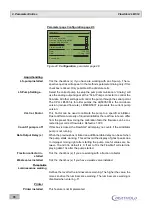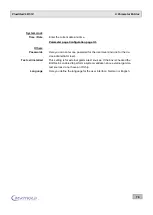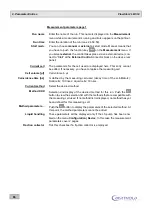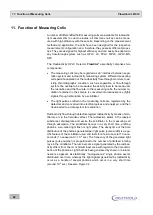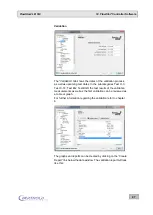
11. Function of Measuring Cells
FlowStar2 LB 514
92
11. Function of Measuring Cells
A number of different Berthold measuring cells are available for radioactiv-
ity measurements in column eluates; all common sources can be meas-
ured with high efficiency with these cells. Depending on the measurement
method and application, the cells have been designed for the respective
measurement configuration and, therefore, they possess different proper-
ties. They are designed for highest efficiency and can easily be adapted to
any flow-through system such as HPLC, LC, FPLC, MPLC, HPLC-MS,
SFC.
The Radioactivity HPLC Detector
FlowStar²
essentially comprises two
components:
The measuring cells may be regarded as an “interface” between sepa-
ration system and radioactivity measuring system. Different measuring
cells permit adaptation of the radioactivity flow-through monitors to ex-
isting chromatographic condition, such as separation or flow-through
system, the nuclide to be measured, the activity level to be measured,
the resolution and the flow rate. In the measuring cells, the nuclear ra-
diation contained in the sample is converted into luminescence (light)
signals through stimulation by a scintillator.
The light pulses emitted in the measuring cells are registered by the
detectors and converted into electrical pulses and analyzed, and then
downloaded to a data system for evaluation.
Radioactivity flow-through detectors register radioactivity by means of scin-
tillators or via the Cerenkov effect. The radioactive atoms in the labeled
substances disintegrate and excite the scintillator in the measuring cell
through adsorption. The scintillator decays in a very short time, emitting
photons, a so-called light flash or light pulse. The decay time or the time
distribution of the photons generated per light pulse (pulse width) is a spe-
cific feature of the scintillator used and lasts for a few to several 10 nano-
seconds (1 nanosecond = 10
-9
sec). The frequency of the generated light
pulses (pulse number) is proportional to the number of adsorbed ionizing
rays in the scintillator. The luminescence signal generated by the radioac-
tivity differs from chemi- or bioluminescence with regard to the time distri-
bution of the photons. Light that has been generated by chemi- or biolumi-
nescence appears as statistically “homogeneous” single photon events
distributed over time, whereas the light signals generated by radioactivity
occur as a bundle of several photons which occur in a very short time
(around 10
-8
sec). See also Figure 34.

